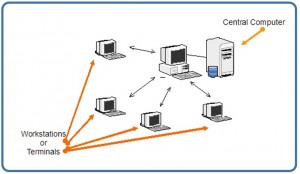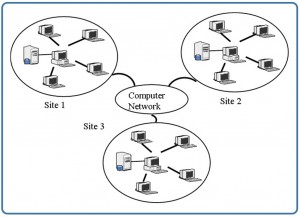6
Adrienne Watt
Database management systems can be classified based on several criteria, such as the data model, user numbers and database distribution, all described below.
Classification Based on Data Model
The most popular data model in use today is the relational data model. Well-known DBMSs like Oracle, MS SQL Server, DB2 and MySQL support this model. Other traditional models, such as hierarchical data models and network data models, are still used in industry mainly on mainframe platforms. However, they are not commonly used due to their complexity. These are all referred to as traditional models because they preceded the relational model.
In recent years, the newer object-oriented data models were introduced. This model is a database management system in which information is represented in the form of objects as used in object-oriented programming. Object-oriented databases are different from relational databases, which are table-oriented. Object-oriented database management systems (OODBMS) combine database capabilities with object-oriented programming language capabilities.
The object-oriented models have not caught on as expected so are not in widespread use. Some examples of object-oriented DBMSs are O2, ObjectStore and Jasmine.
Classification Based on User Numbers
A DBMS can be classification based on the number of users it supports. It can be a single-user database system, which supports one user at a time, or a multiuser database system, which supports multiple users concurrently.
Classification Based on Database Distribution
There are four main distribution systems for database systems and these, in turn, can be used to classify the DBMS.
Centralized systems
With a centralized database system, the DBMS and database are stored at a single site that is used by several other systems too. This is illustrated in Figure 6.1.

In the early 1980s, many Canadian libraries used the GEAC 8000 to convert their manual card catalogues to machine-readable centralized catalogue systems. Each book catalogue had a barcode field similar to those on supermarket products.
Distributed database system
In a distributed database system, the actual database and the DBMS software are distributed from various sites that are connected by a computer network, as shown in Figure 6.2.

Homogeneous distributed database systems
Homogeneous distributed database systems use the same DBMS software from multiple sites. Data exchange between these various sites can be handled easily. For example, library information systems by the same vendor, such as Geac Computer Corporation, use the same DBMS software which allows easy data exchange between the various Geac library sites.
Heterogeneous distributed database systems
In a heterogeneous distributed database system, different sites might use different DBMS software, but there is additional common software to support data exchange between these sites. For example, the various library database systems use the same machine-readable cataloguing (MARC) format to support library record data exchange.
Key Terms
distributed database system: the actual database and the DBMS software are distributed from various sites that are connected by a computer network
heterogeneous distributed database system: different sites might use different DBMS software, but there is additional common software to support data exchange between these sites
homogeneous distributed database systems: use the same DBMS software at multiple sites
multiuser database system: a database management system which supports multiple users concurrently
object-oriented data model: a database management system in which information is represented in the form of objects as used in object-oriented programming
single-user database system: a database management system which supports one user at a time
traditional models: data models that preceded the relational model
Exercises
- Provide three examples of the most popular relational databases used.
- What is the difference between centralized and distributed database systems?
- What is the difference between homogenous distributed database systems and heterogeneous distributed database systems?
Attribution
This chapter of Database Design (including images, except as otherwise noted) is a derivative copy of Database System Concepts by Nguyen Kim Anh licensed under Creative Commons Attribution License 3.0 license
The following material was written by Adrienne Watt:
- Key Terms
- Exercises

